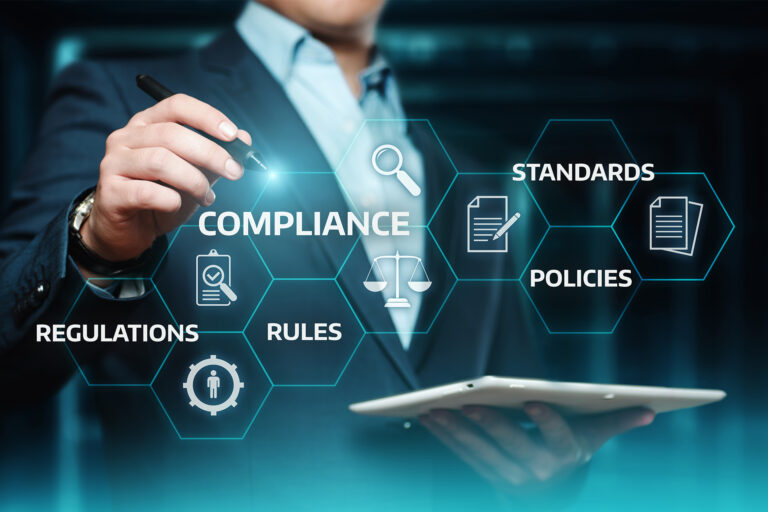Understanding NIST AI 600-1: A New Paradigm in Cybersecurity
Over the past year, AI has transformed the technology and cybersecurity landscape, introducing urgen

As companies increasingly rely on technology, cloud hosting providers, and cloud applications (SaaS) to operate and store sensitive data, compliance with regulatory requirements has become critical to ensuring their success and reputation. In today’s complex business landscape, organizations face the challenge of meeting regulatory requirements and achieving compliance excellence. The ever-changing regulatory landscape, encompassing frameworks such as ISO 27001, NIST, and legislation like GDPR, HIPAA, and PCI-DSS, poses significant challenges for businesses across various industries. In this blog, we will explore the intricacies of compliance and provide valuable insights for business leaders seeking to navigate this complex landscape successfully.
Compliance with regulatory requirements is critical to maintaining trust, protecting sensitive data, and avoiding potential legal and financial repercussions. In information security, compliance frameworks and regulations are designed to ensure sensitive data’s confidentiality, integrity, and availability. Some of the most common compliance frameworks and regulations include:
The compliance landscape can be complex, and businesses may be unsure of what to comply with. The answer depends on various factors, such as the industry, the type of data they handle, and their geographic location. For instance, if you take credit card data, PCI-DSS compliance ensures the protection of credit card data. Healthcare organizations must adhere to HIPAA to safeguard patients’ protected health information, and any company operating within the EU or collecting personal information about EU citizens must comply with GDPR to protect individuals’ privacy rights. Additionally, businesses needing to attest their security requirements to customers often implement ISO 27001 as the basis of their information security program and undergo SOC 2 audits to receive an annual attestation report about their company’s security status.
Achieving compliance is not a one-size-fits-all approach. Each regulation or framework comes with its own set of requirements and nuances. Conducting a thorough assessment of your organization’s operations and data-handling practices is crucial to identify the compliance obligations that apply to your business. By understanding these requirements, you can develop targeted strategies, implement appropriate controls, and allocate resources effectively to ensure compliance success.
Achieving compliance excellence has its challenges. Some of these challenges include:
Businesses can engage a trusted partner who can provide them with the expertise, resources, and guidance they need to achieve compliance success to overcome these challenges.
Here are a few practical tips and best practices for achieving compliance excellence to assist organizations in their compliance journey.
While achieving compliance can be challenging, it can also be a key driver of business success. Compliance can help businesses:
Compliance is critical to ensuring business success and reputation in today’s business landscape. Businesses can achieve compliance excellence by understanding regulatory requirements, following practical tips and best practices, and overcoming common challenges. As organizations strive to meet regulatory requirements and achieve compliance success, partnering with cybersecurity experts becomes crucial. Partnering with a trusted partner who can provide expertise, resources, and guidance can help businesses navigate the complex compliance landscape and achieve their security and business objectives.

Brent Neal, the lead vCISO and principal advisor at Vanguard Technology Group, brings over 25 years of extensive experience in Security, IT, and GRC departments. With expertise in strategy, governance, program development, and compliance, Mr. Neal has paved the way for VTG’s comprehensive services. We specialize in providing holistic consulting, strategic planning, and tailored solutions to meet the unique security needs of various industries. Our expert guidance helps organizations establish a strong security posture, align initiatives with business objectives, and confidently navigate the evolving cybersecurity landscape.
Share our blog and spread cybersecurity knowledge!

Over the past year, AI has transformed the technology and cybersecurity landscape, introducing urgen
Many companies face challenges in effectively prioritizing and maturing their security domains, such
One of the greatest cyber threats facing businesses today is ransomware, and many are uncertain abou
Introduction In cybersecurity, it’s easy to assume that more security tools would equate to better
Every year, IBM Security publishes a report about the cost of a data breach. The 2023 Cost of Data B
In today’s digital landscape, businesses are at a greater risk of cyberattacks than ever. With the

Security Leadership (Virtual CISO)
Program Development & Maturity
Compliance Services
Advisory & Consulting Services
© All Copyright 2023-2024 by Vanguard Technology Group